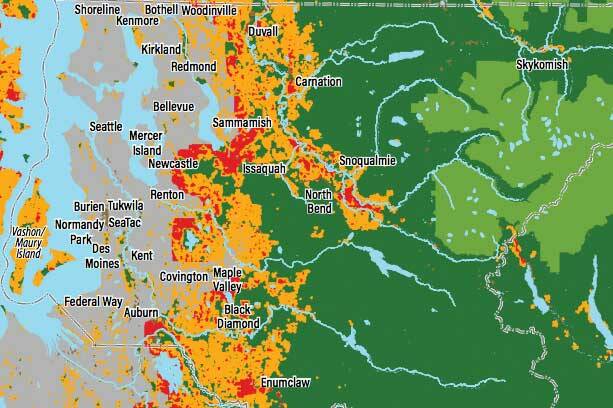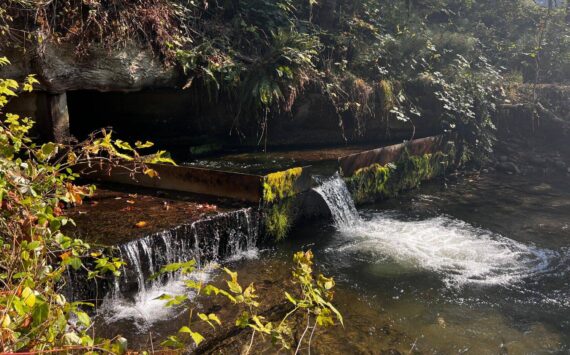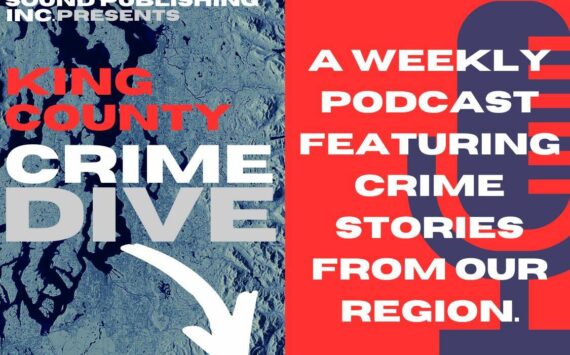King County Executive Dow Constantine recently announced the region’s first-ever Wildfire Risk Reduction Strategy, a set of 12 recommended actions to improve preparedness, response, and recovery as the potential for wildfire increases in Western Washington.
The Washington Department of Natural Resources recently updated maps that show a significantly expanded of the wildland-urban interface in King County, areas where people and infrastructure are at greater risk when wildfires occur.
According to the county, more than 350,000 people – about 15 percent of King County’s population – live in the wildland-urban interface.
“As climate change increases the odds of a devastating wildfire occurring on our side of the Cascades, we are taking immediate action to better protect people, homes, and infrastructure,” said Executive Constantine. “Our experts and partners have delivered a solid set of recommendations that will strengthen our region’s wildfire resilience, response, and recovery.”
The strategy’s recommended actions are organized around three guiding priorities – making King County forests more resilient to wildfire, reducing risks to communities and infrastructure in the wildland-urban interface, and enhancing emergency response.
Firefighters responded to more than 700 brush fires in South King County between May 1 and Sept. 30, 2021, according to the county.
The vast majority of wildfires in Washington – an estimated 85 percent, according to the state Department of Natural Resources – are started by people, and it is expected that figure is likely higher in more densely populated areas, including King County.
The Puget Sound Regional Council estimates that the population in the four-county area will increase by as much as 1.8 million people by 2050. The county believes that as the population grows, the number of fires ignited by human activity will increase.
As conditions become more favorable for wildfire in Western Washington, the odds that a smaller fire becomes a large one that cannot be quickly contained increases, particularly if a fire occurs on a late Summer day with strong winds from Eastern Washington.
The recommended actions in King County’s Wildfire Risk Reduction Strategy include community wildfire planning, increased public education and outreach, enhanced training for first responders, and promoting healthy, resilient forests.
Here are a few of the recommended actions:
– Work with communities in the wildland-urban interface to help them develop preparedness, response, and recovery plans.
– Expanding assistance programs for homeowners who want to reduce wildfire risks on their property.
– Increasing technical and financial assistance for small forest landowners to help them improve the health of their forest.
– Making it easier and less expensive for emergency responders to share resources faster.
– Improving evacuations in the wildland-urban interface by adopting the ‘Ready, Set, Go!’ public education model.
– Developing post-fire response plans that promote forest recovery and reduce wildfire impacts on natural resources.
According to the county, helping communities develop a preparedness, response, and recovery plan is critical to success given that few communities in the temperate Puget Sound region were designed with wildfire hazards in mind. For example, the county says there are neighborhoods in the wildland-urban interface that have only a single access point for hundreds of households, making it difficult for residents to evacuate and for firefighters to respond.
The forest resilience actions are based on the principle that forests that have a diversity of tree species in different development stages – featuring a healthy mix of young and mature conifers and deciduous trees – are more resilient to wildfire and are better able to recover after a fire.
The King County Department of Natural Resources and Parks says it will continue to work with forest landowners and managers to promote species and structural diversity in local forests.
Five of the 12 recommended actions would strengthen emergency responses to wildfire. One action would have King County fire departments, King County Emergency Management, and other partner agencies collectively make access to wildfire response resources easier and less expensive. That would include earlier access to helicopters for an initial attack.
The authors of the strategy note that no single organization is responsible for wildfire preparedness in King County, which is why the strategy was not designed exclusively for King County government agencies. Instead, the county claims the strategy provides an overarching framework for mobilizing resources and aligning efforts to improve wildfire preparedness, response, and recovery.







